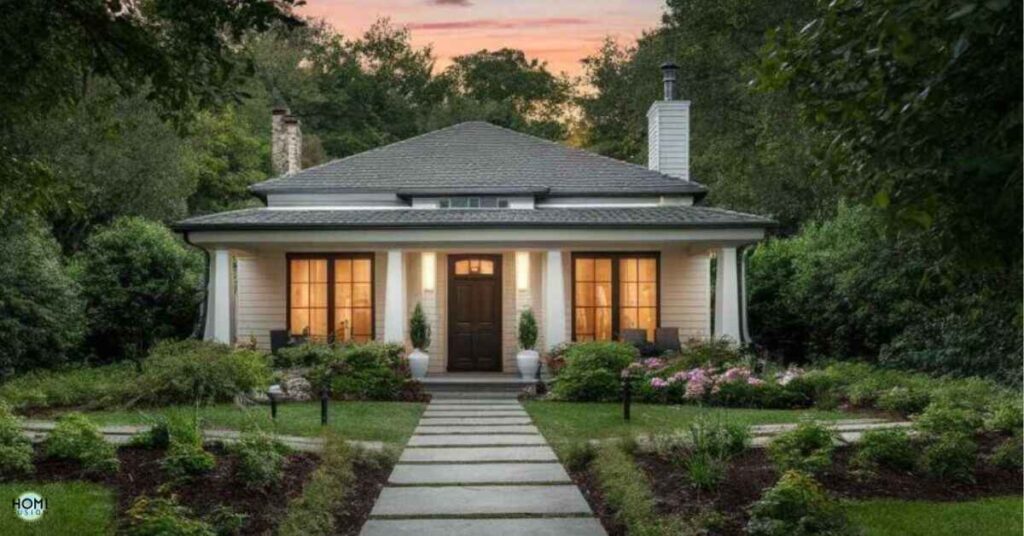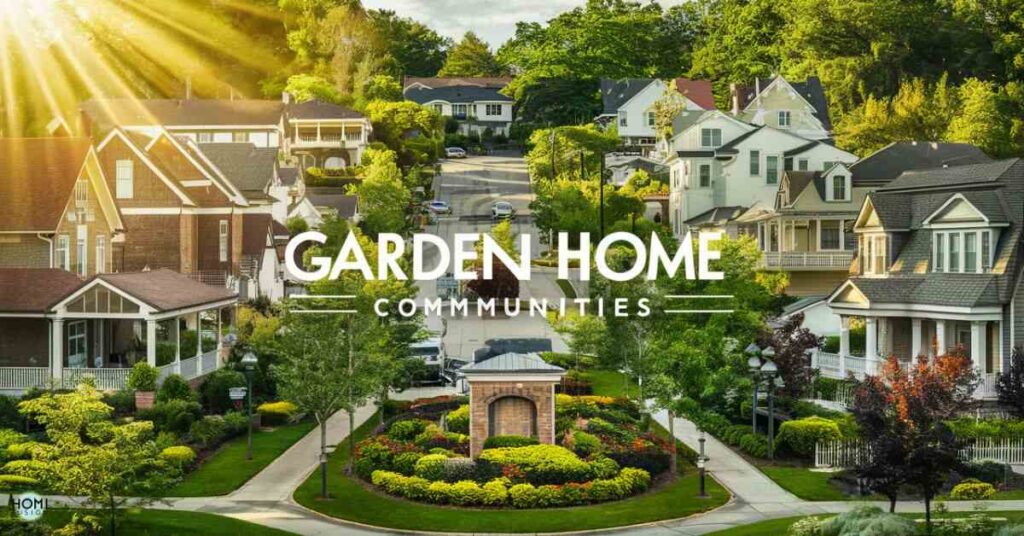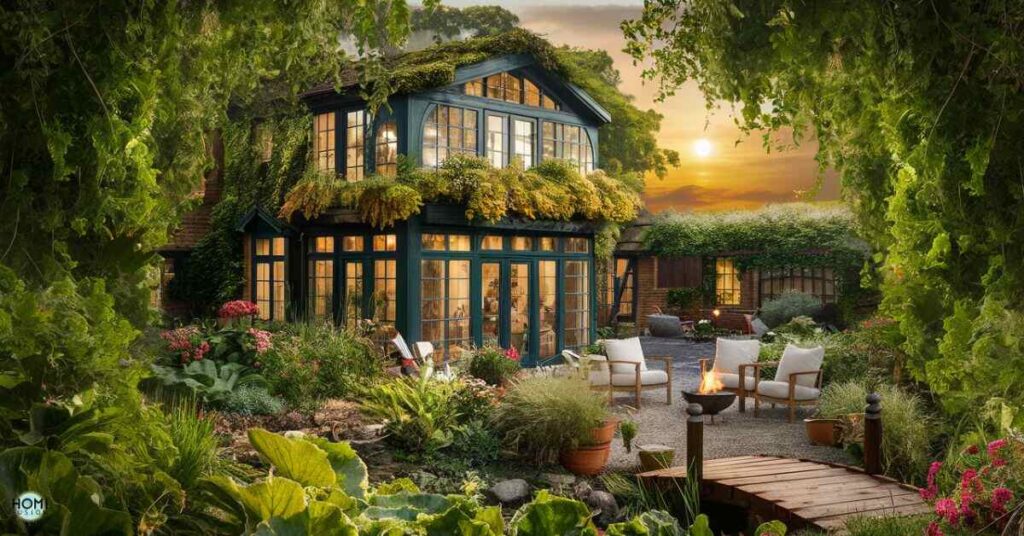In the realm of residential living, garden homes stand out as cozy havens that seamlessly blend indoor and outdoor spaces. These charming abodes are often characterized by their one-story layouts or bungalow-style designs.
They offer a unique opportunity to embrace a low-maintenance lifestyle surrounded by lush greenery. Whether you’re a first-time homebuyer seeking a cozy retreat or an empty-nester looking to downsize, garden homes provide an alluring blend of comfort and tranquility.
Origins and History of Garden Homes
The concept of garden homes can be traced back to the Arts & Crafts movement of the late 19th century. This movement celebrated simplicity, functionality, and a connection with nature. Inspired by the Bauhaus principles of clean lines and minimalism, garden homes gained popularity in the 1920s and 1940s. They were seen as a refreshing alternative to the ornate and imposing architectural styles of the time.
These cozy dwellings, often found in suburban neighborhoods, were designed to provide residents with a seamless transition between indoor and outdoor living spaces. The integration of lush gardens, patios and courtyards allowed homeowners to embrace the beauty of nature while enjoying the comforts of modern living.
Key Features of Garden Homes
At the heart of a garden home lies a thoughtful design that prioritizes indoor-outdoor living. These homes typically feature:
One-story layout or bungalow-style: Garden homes are typically single-level dwellings, making them ideal for those seeking a cozy and accessible living environment.

Open floor plans with lots of windows: Large windows and open layouts create a sense of spaciousness and invite natural light into the living spaces, fostering a connection with the outdoors.
Seamless indoor/outdoor living spaces: Seamless transitions between interior living areas and outdoor spaces are a hallmark of garden homes. They encourage a free-flowing lifestyle that blurs the boundaries between indoors and out.
Charming designs: From quaint cottages to modern interpretations, garden homes often exude a warm and inviting aesthetic. They pay attention to detail in their architectural elements and landscaping.
One notable example of a charming garden home design is the award-winning “Cottage Series“. These cozy dwellings, inspired by the Arts & Crafts movement, feature intricate details like exposed beams and built-in cabinetry. They also include inviting front porches that seamlessly blend with meticulously designed gardens and outdoor living spaces.
Read this blog:
What Is The Value Of My Mobile Home?
Benefits of Garden Home Living
Beyond their aesthetic appeal, garden homes offer a range of benefits that make them an attractive choice for many homebuyers:
Cozy, low-maintenance lifestyle: With their compact layouts and thoughtful designs, garden homes require minimal upkeep, allowing residents to enjoy a hassle-free lifestyle without sacrificing comfort or style.
Indoor/outdoor entertaining areas: The seamless integration of indoor and outdoor living spaces makes garden homes ideal for entertaining guests. Imagine hosting a backyard barbecue or an intimate dinner party that effortlessly transitions from the kitchen to the patio or garden.

Lush landscaping and gardens: Surrounded by meticulously designed gardens and green spaces, garden homes offer a tranquil oasis. Here, residents can connect with nature and enjoy the beauty of their surroundings.
Energy efficiency: Many garden homes are designed with energy efficiency in mind. They feature eco-friendly materials, strategic window placement and landscaping that provides natural insulation and shade, potentially leading to cost savings on utility bills.
Designing Your Dream Garden Home
If the idea of a garden home has captured your heart, working with a skilled architect or designer can help bring your vision to life. Here are some key considerations when designing your dream garden home:
Working with an architect: Collaborate with an experienced architect who understands the principles of indoor-outdoor living. They can create a design that seamlessly integrates your living spaces with the surrounding landscape.
Choosing a lot/land for a garden home: Selecting the right lot or land is crucial for a successful garden home design. Consider factors like privacy, exposure to natural light, and the potential for lush landscaping.
Maximizing indoor/outdoor flow: Thoughtful placement of doors, windows, and outdoor living areas can create a smooth transition between the indoors and out. This fosters a sense of openness and connection with nature.
Lush landscaping ideas: Work with a landscape architect or designer to create a harmonious outdoor space that complements your garden home’s aesthetics. Consider incorporating features like walking paths, water elements, and strategically placed greenery to enhance the overall ambiance.
Garden Home Communities
While some garden homes may be standalone properties, many prospective homebuyers are drawn to the concept of planned garden home communities. These neighborhoods are designed around the principles of indoor-outdoor living, often featuring:

Community amenities: Garden home communities frequently offer amenities such as pools, clubhouses and fitness centers. These amenities foster a sense of community and provide opportunities for social interaction.
Prime locations: Many garden home communities are strategically located in desirable areas. They offer residents convenient access to shopping, dining, and entertainment while enjoying the tranquility of their private oasis.
Homeowner association considerations: While homeowner associations (HOAs) can help maintain the community’s aesthetic and shared spaces, it’s important to review their rules and regulations. Ensure they align with your preferences and lifestyle before making a decision.
Also read:
What Is A Coach House?
Frequently asked questions
What exactly is a garden home?
A garden home, also known as a patio home, is a type of single-family residential dwelling that is designed to seamlessly blend indoor and outdoor living spaces.
How do garden homes differ from traditional single-family homes?
Unlike traditional detached single-family homes, garden homes are often built on smaller lots, with a greater emphasis on maximizing outdoor living spaces. They may be part of a planned community, and some garden home neighborhoods have shared amenities, such as pools, clubhouses, and walking trails.
Are garden homes low maintenance?
Yes, one of the key benefits of garden homes is their low-maintenance lifestyle. With their compact size and thoughtful design, these homes require less upkeep than larger, traditional single-family homes.
Are garden homes suitable for all ages and lifestyles?
Garden homes can be a great fit for various lifestyles and age groups. They are particularly popular among empty nesters, retirees and those seeking a low-maintenance living environment without sacrificing comfort or style.
Can I customize or personalize a garden home?
Absolutely! While garden homes may be part of a planned community, many builders and developers offer a range of floor plans and design options to choose from.
Top of Form
Conclusion
Garden homes offer a unique and alluring lifestyle for those seeking a cozy retreat that seamlessly blends indoor and outdoor living. With their roots in the Arts & Crafts movement and Bauhaus principles, these charming abodes prioritize simplicity, functionality and a connection with nature.
From their open floor plans and abundant natural light to their lush landscaping and energy-efficient designs, garden homes provide a tranquil oasis. Here, residents can embrace a low-maintenance lifestyle without sacrificing comfort or style.
Whether you’re a first-time homebuyer, an empty-nester, or simply someone who appreciates the beauty of indoor-outdoor living, a garden home might just be the perfect fit. By working with skilled professionals, you can create a personalized retreat. This retreat seamlessly blends the comforts of home with the serenity of nature, considering your lifestyle preferences.







